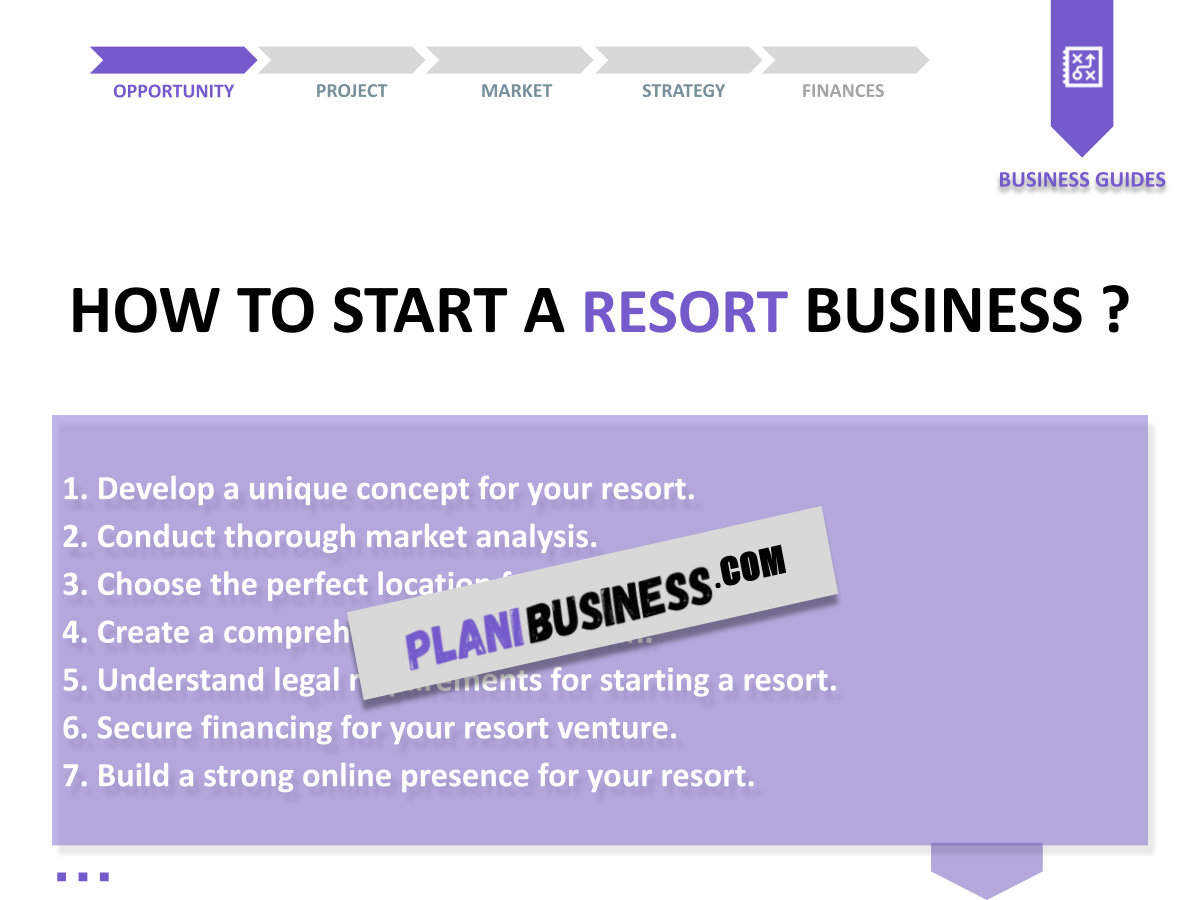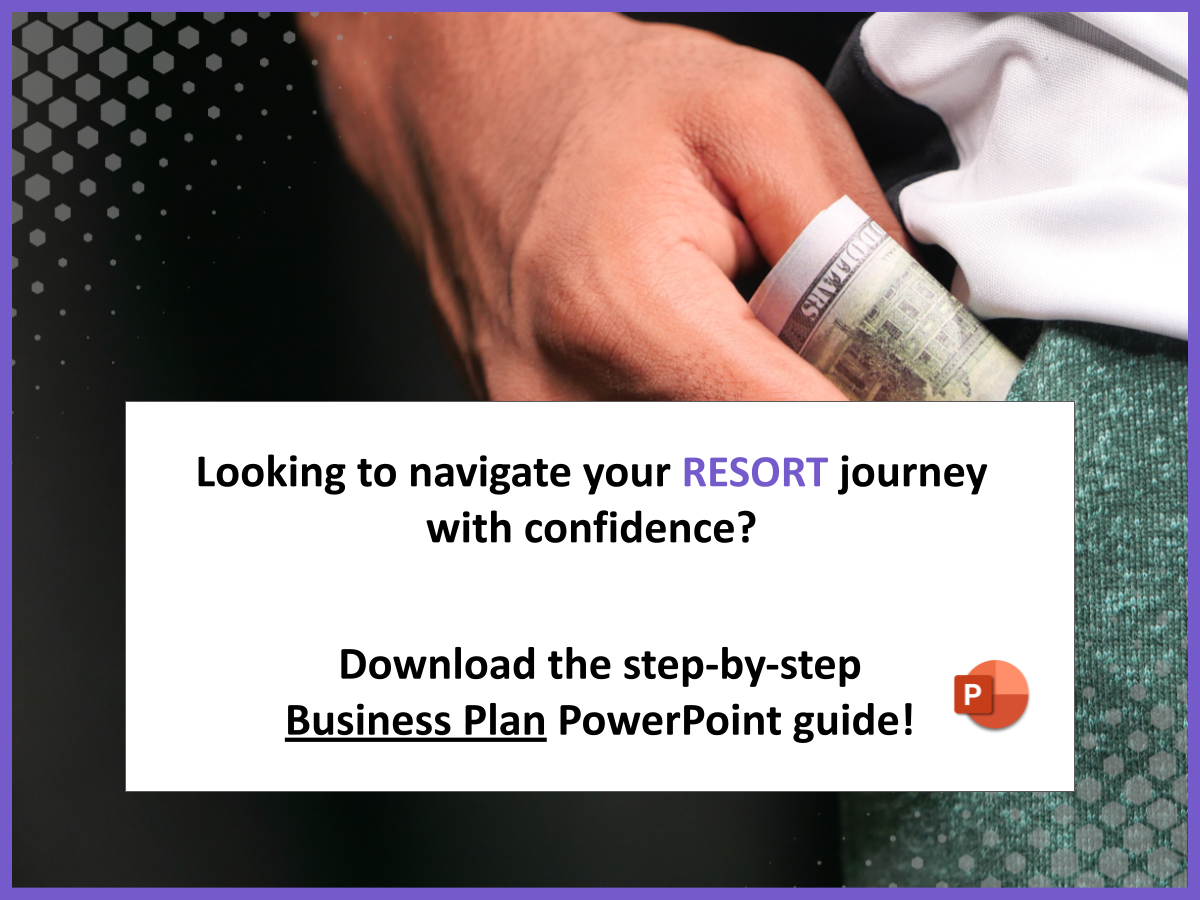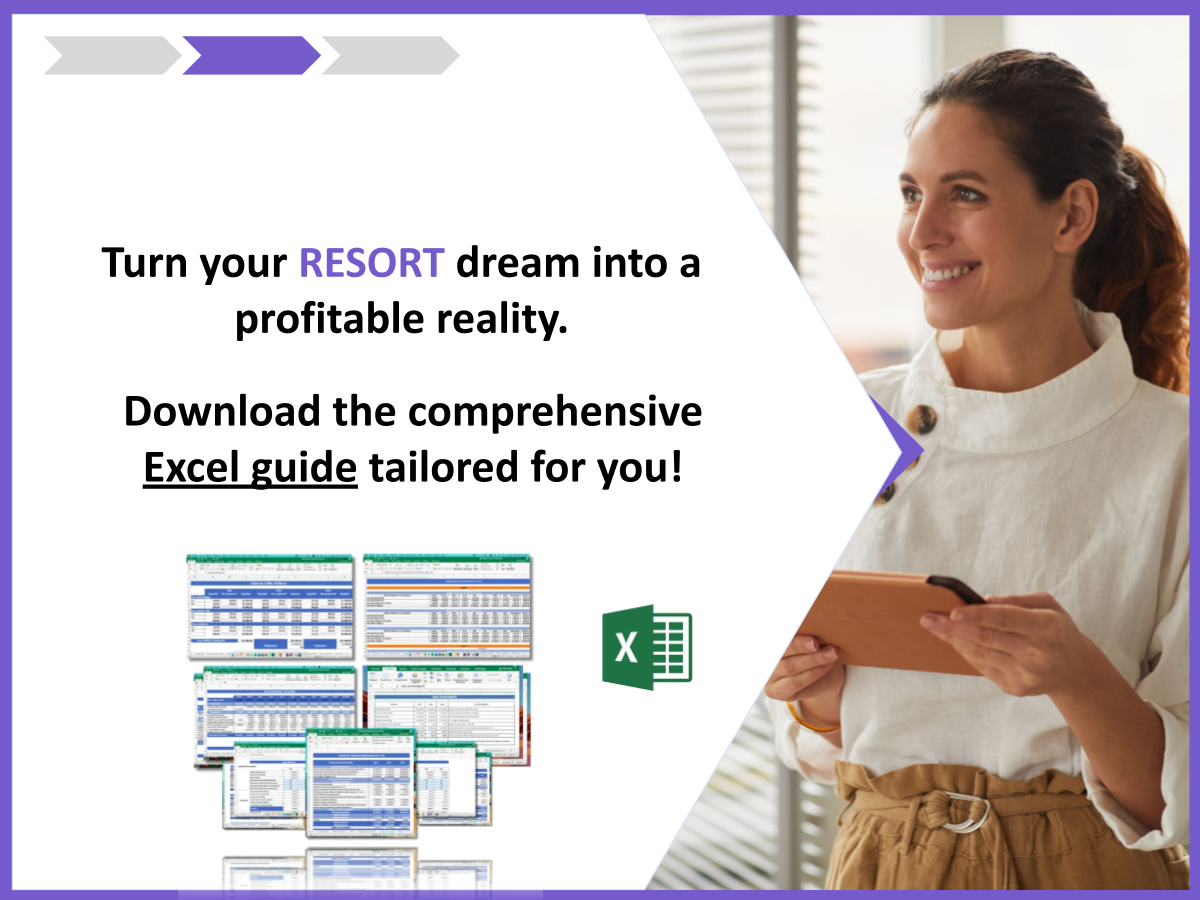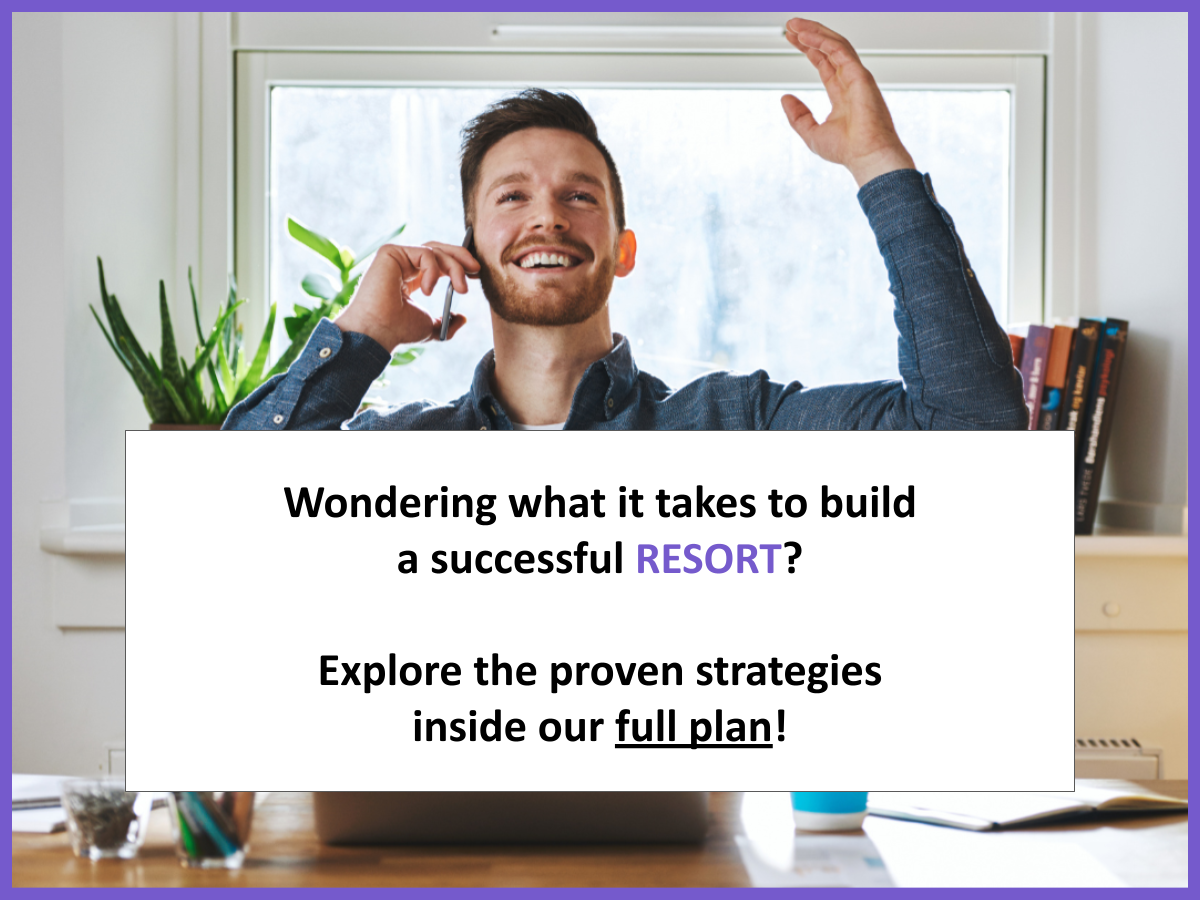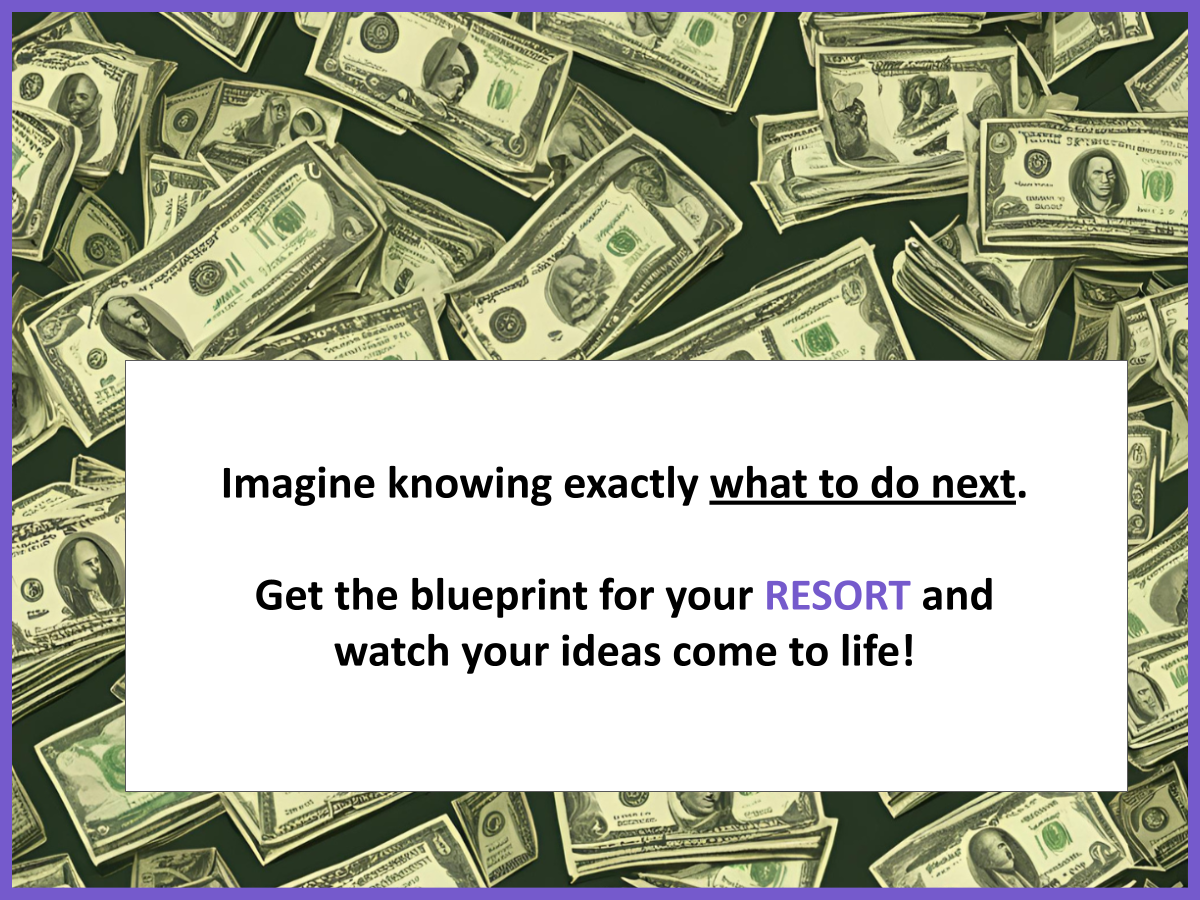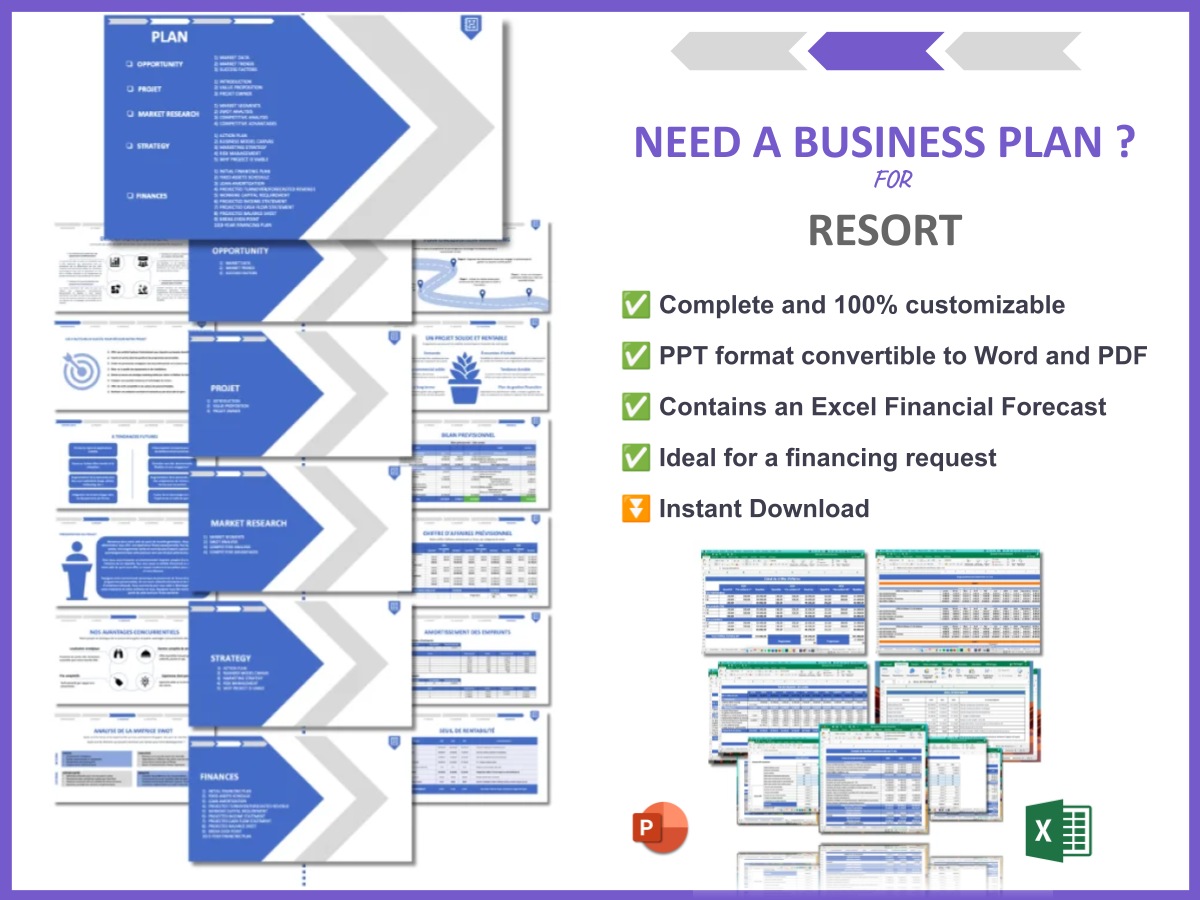Are you dreaming of creating your own paradise? You’re not alone! The resort industry is booming, with more people seeking unique travel experiences that provide relaxation and adventure. In fact, the global resort market is expected to grow significantly in the coming years. Understanding how to start a resort can seem daunting, but with the right guidance and planning, you can turn your vision into reality. A resort isn’t just a place to stay; it’s a complete experience that caters to the needs and desires of your guests.
In this article, we’ll explore the essential steps to help aspiring entrepreneurs like you successfully launch a resort. Here’s a sneak peek of what we will cover:
- Developing a unique concept for your resort.
- Conducting thorough market analysis.
- Choosing the ideal location for your resort.
- Creating a comprehensive business plan.
- Navigating legal requirements.
- Securing financing for your venture.
1. How to Start a Resort with a Unique Concept?
Every successful resort begins with a unique concept that resonates with potential guests. The first step is to brainstorm what makes your vision stand out. Is it a wellness retreat focused on holistic health, a family-friendly resort filled with activities, or perhaps an eco-resort that emphasizes sustainability? Your concept is the foundation upon which your resort will be built.
Here are some tips to refine your resort concept:
- Identify your target audience: Who do you want to attract? Families, couples, adventure seekers, or wellness enthusiasts? Understanding your audience will help shape your offerings.
- Research existing resorts: Look into what other resorts in your desired area are doing. What works for them? What doesn’t? This can provide inspiration and help you find gaps in the market.
- Gather feedback: Share your concept with friends, family, or potential guests to get their thoughts. This feedback can be invaluable in shaping your idea.
Remember, your resort concept should not only be unique but also viable. It should align with market trends and guest expectations. For example, if wellness tourism is on the rise, incorporating spa services, yoga classes, and healthy dining options could set your resort apart.
2. Resort Market Analysis
Conducting a thorough market analysis is essential for understanding your competition and identifying your target market. This analysis will provide insights into the feasibility of your resort concept and help you refine your business strategy.
Start by identifying similar resorts in your desired location. Consider the following aspects:
| Aspect | Considerations |
|---|---|
| Demographics | Understand the age, income, and preferences of your target guests. This helps tailor your offerings. |
| Competitors | Analyze both direct and indirect competitors in the area. What are their strengths and weaknesses? |
| Trends | Stay updated on current trends in the hospitality industry. Are guests looking for more sustainable options or unique experiences? |
Utilize surveys and online tools to gather data. For example, Google Trends can provide insights into popular travel destinations and emerging preferences. By analyzing this data, you can make informed decisions about your resort’s offerings and marketing strategies.
In conclusion, understanding how to start a resort involves a combination of creativity, research, and strategic planning. By developing a unique concept and conducting a thorough market analysis, you can lay a strong foundation for your resort venture.
3. Choosing the Perfect Location for Your Resort
The location of your resort is one of the most critical factors that can determine its success. A stunning backdrop, accessibility, and nearby attractions can significantly enhance the guest experience. So, how do you choose the perfect spot?
Here are some key considerations to keep in mind:
- Natural beauty: Look for areas with breathtaking views, beaches, mountains, or lush landscapes. A picturesque setting can be a huge draw for guests.
- Accessibility: Ensure that your resort is easy to reach. Is it close to major airports or highways? Consider the convenience for your guests.
- Local attractions: Being near popular tourist destinations, such as national parks, historical sites, or entertainment venues, can attract more visitors to your resort.
Additionally, you must consider zoning laws and regulations. Make sure the land is suitable for development and aligns with your vision. It’s essential to conduct thorough research to ensure that the location meets your resort’s operational needs.
| Location Criteria | Importance |
|---|---|
| Proximity to Attractions | Higher foot traffic and interest. |
| Safety and Security | Ensures guest comfort and peace of mind. |
| Market Demand | Understanding local tourism trends helps in positioning your resort effectively. |
In summary, when choosing a location for your resort, aim for a balance between natural beauty, accessibility, and local attractions. This combination will create an irresistible appeal for potential guests.
4. How to Start a Resort Business Plan
A comprehensive business plan is a roadmap for your resort’s success. It outlines your vision, target market, competition analysis, and financial projections. Without a solid plan, navigating the complexities of starting a resort can be overwhelming.
Here’s what to include in your business plan:
- Executive Summary: Provide an overview of your resort concept, including your mission statement and objectives.
- Market Analysis: Summarize your findings from the market analysis, including details about your target audience and competitors.
- Marketing Strategy: Outline how you plan to attract guests, including advertising, promotions, and partnerships.
- Financial Projections: Estimate your startup costs, operational expenses, and revenue streams. This section should provide a clear picture of your financial goals.
I recommend checking out this business plan template for Resort. It’s super detailed and can save you a ton of time! Using a template can help ensure you cover all necessary aspects and present your ideas professionally.
Remember, your business plan is not just a document for securing funding; it’s a living guide that will help you stay focused on your goals and adjust your strategies as needed. Regularly review and update your plan to reflect changes in the market or your business direction.
In conclusion, a well-structured business plan is vital for understanding how to start a resort successfully. It provides clarity and direction, ensuring you’re prepared for the challenges ahead.
5. Legal Requirements for Starting a Resort
Understanding the legal requirements for starting a resort is crucial for ensuring compliance and avoiding costly mistakes. Each region has its own set of laws and regulations, so it’s essential to familiarize yourself with the specific requirements in your area.
Here are some key legal steps to consider:
- Business Registration: Register your resort as a legal entity. This may involve choosing a business structure, such as a sole proprietorship, partnership, or corporation.
- Permits and Licenses: Obtain all necessary permits and licenses. This can include zoning permits, health and safety licenses, and operational permits from local authorities.
- Insurance: Secure appropriate insurance coverage. This typically includes liability insurance, property insurance, and possibly workers’ compensation insurance for your staff.
It’s often beneficial to consult with a legal expert who specializes in hospitality or real estate. They can guide you through the complexities of local laws and help ensure that your resort is compliant with all regulations.
| Legal Requirement | Description |
|---|---|
| Business Registration | Officially register your resort and select a business structure. |
| Licenses and Permits | Acquire necessary operational licenses and permits based on local laws. |
| Insurance | Obtain various types of insurance to protect your business and assets. |
In summary, navigating the legal landscape is a critical step in how to start a resort. Ensuring compliance will not only protect your investment but also build trust with your guests.
6. Financing Your Resort Venture
Securing financing for your resort can be one of the most challenging aspects of starting your business. Understanding your options and preparing a solid financial plan is essential for attracting investors or securing loans.
Here are some strategies for financing your resort:
- Bank Loans: Traditional bank loans are a common option. Prepare a detailed business plan and financial projections to present to lenders.
- Investors: Consider bringing on investors who can provide capital in exchange for equity in your resort. This can help reduce your financial burden.
- Crowdfunding: Utilize crowdfunding platforms to raise money from a larger pool of individuals. This method can also generate interest and awareness for your resort.
When preparing your financial plan, ensure that you include startup costs, ongoing operational expenses, and projected revenue. This will help you understand how much funding you need and how long it may take to become profitable.
| Funding Source | Advantages | Disadvantages |
|---|---|---|
| Bank Loans | Lower interest rates and structured repayment plans. | Stringent approval process and collateral may be required. |
| Investors | Access to larger amounts of capital. | Loss of some control over business decisions. |
| Crowdfunding | Engages potential guests and creates community support. | Uncertainty in meeting funding goals. |
In conclusion, understanding your financing options is a vital component of how to start a resort. By exploring various funding avenues and preparing a comprehensive financial plan, you can secure the resources needed to turn your dream resort into a reality.
7. Creating a Memorable Brand Identity
Your brand identity is the essence of your resort. It communicates who you are and what you stand for. A strong brand can differentiate you from competitors and attract your target audience.
Here are some key elements to consider when developing your brand identity:
- Brand Name: Choose a name that reflects your resort’s concept and values. It should be memorable and resonate with your target guests.
- Logo Design: Create a visually appealing logo that encapsulates your brand. This logo will be used on your website, marketing materials, and signage.
- Brand Voice: Define how you communicate with your guests. Your tone should align with your brand’s personality, whether it’s casual, luxurious, or adventurous.
Once you establish your brand identity, ensure consistency across all platforms. This includes your website, social media, and any promotional materials. Consistency helps build trust and recognition among potential guests.
| Brand Element | Importance |
|---|---|
| Brand Name | Sets the tone for your resort’s image and guest perception. |
| Logo | Acts as a visual representation of your brand, making it easily recognizable. |
| Brand Messaging | Communicates your values and mission, connecting emotionally with guests. |
In summary, creating a memorable brand identity is crucial in how to start a resort. It establishes your presence in the market and helps attract the right clientele.
8. Building a Strong Online Presence
In today’s digital age, having a robust online presence is essential for any resort. Most travelers research their accommodations online before making a booking, so your website and social media profiles must be engaging and informative.
Here are some strategies to establish a strong online presence:
- Professional Website: Develop a user-friendly website that showcases your resort’s amenities, services, and unique features. Ensure it is visually appealing and easy to navigate.
- Search Engine Optimization (SEO): Optimize your website for search engines to improve visibility. Use relevant keywords, such as how to start a resort, in your content to attract organic traffic.
- Social Media Engagement: Utilize platforms like Instagram, Facebook, and Pinterest to share stunning visuals of your resort. Engage with followers through regular updates, promotions, and interactions.
Additionally, consider implementing a blog on your website. This can help establish your authority in the hospitality industry while providing valuable content to your audience. Topics could include local attractions, travel tips, or wellness advice, depending on your resort’s focus.
| Online Presence Element | Purpose |
|---|---|
| Website | Central hub for information, bookings, and promotions. |
| Social Media | Engages potential guests and builds community around your brand. |
| Blog | Provides valuable content, boosts SEO, and establishes authority. |
In conclusion, building a strong online presence is a vital part of how to start a resort. By investing in your digital marketing strategies, you can attract more guests and create lasting relationships with them.
9. Marketing Strategies for Your Resort
Effective marketing is crucial for attracting guests to your resort. In a competitive industry, you need to stand out and communicate the unique experiences you offer. Here are some essential marketing strategies to consider:
- Targeted Advertising: Utilize online advertising platforms like Google Ads and social media ads to reach your specific audience. Tailor your ads based on demographics, interests, and travel behaviors.
- Promotions and Packages: Create enticing packages that combine accommodations with activities or dining experiences. Special promotions during off-peak seasons can attract more guests.
- Partnerships: Collaborate with local businesses, such as tour operators, restaurants, or event planners. These partnerships can enhance your offerings and create cross-promotional opportunities.
It’s also important to measure the effectiveness of your marketing efforts. Utilize analytics tools to track website traffic, social media engagement, and booking conversions. This data will help you refine your strategies and improve your return on investment.
| Marketing Strategy | Benefit |
|---|---|
| Targeted Advertising | Reaches specific audiences likely to book your resort. |
| Promotions | Increases occupancy during slower periods. |
| Partnerships | Enhances guest experiences and broadens market reach. |
In summary, implementing effective marketing strategies is essential in how to start a resort. By focusing on targeted advertising, attractive promotions, and strategic partnerships, you can attract guests and build a loyal customer base.
10. Hiring the Right Team for Your Resort
Your resort’s success heavily relies on the quality of your staff. Hiring the right team is essential for delivering exceptional guest experiences and maintaining operational efficiency. Here are some steps to help you build a strong team:
- Define Roles: Clearly outline the roles and responsibilities for each position. This ensures that everyone knows what is expected of them and how they contribute to the resort’s success.
- Recruitment Process: Implement a thorough recruitment process that includes interviews, reference checks, and possibly trial shifts. Look for candidates who not only have the necessary skills but also share your resort’s values.
- Training Programs: Develop training programs that equip your staff with the knowledge and skills they need. Continuous training helps maintain high service standards and enhances employee satisfaction.
Additionally, fostering a positive workplace culture can lead to higher employee retention rates. Happy employees are more likely to provide excellent service, which directly impacts guest satisfaction.
| Hiring Aspect | Consideration |
|---|---|
| Role Definition | Ensures clarity in expectations and responsibilities. |
| Recruitment Process | Attracts candidates who align with your resort’s vision. |
| Training | Maintains high service standards and enhances guest experiences. |
In conclusion, hiring the right team is a fundamental step in how to start a resort. By defining roles, implementing a thorough recruitment process, and providing ongoing training, you can create a dedicated and skilled workforce that elevates your resort’s reputation.
11. Designing Your Resort Layout
The layout of your resort is critical in shaping guest experiences and operational efficiency. A well-designed resort not only enhances aesthetics but also improves functionality. Here are some key considerations when designing your resort layout:
- Guest Flow: Plan pathways and common areas to facilitate smooth movement throughout the resort. Consider how guests will navigate from their rooms to amenities like pools, restaurants, and activity areas.
- Natural Elements: Incorporate nature into your design. This can include gardens, water features, and outdoor lounges that enhance the guest experience and create a relaxing atmosphere.
- Accessibility: Ensure that your resort is accessible to all guests, including those with disabilities. This may involve designing ramps, elevators, and wide pathways.
Consulting with architects and designers who specialize in hospitality can help you create a layout that maximizes both beauty and functionality. They can provide insights into trends and best practices in resort design.
| Design Element | Consideration |
|---|---|
| Guest Flow | Ensures a seamless experience from check-in to activities. |
| Natural Features | Enhances the overall ambiance and promotes relaxation. |
| Accessibility | Makes your resort welcoming to all guests. |
In conclusion, effective resort layout design is essential in how to start a resort. By prioritizing guest flow, incorporating natural elements, and ensuring accessibility, you can create an inviting and functional space for all visitors.
12. Setting Up Operational Systems for Your Resort
Establishing efficient operational systems is crucial for the smooth running of your resort. These systems help manage bookings, guest services, and maintenance effectively. Here are some key areas to focus on:
- Booking Management: Implement a reliable reservation system that allows guests to book rooms easily. This system should integrate with your website and provide real-time availability.
- Guest Services: Develop protocols for guest interactions, including check-in/check-out processes, room service, and concierge services. Consistency in service delivery enhances guest satisfaction.
- Maintenance Systems: Establish a maintenance schedule for your facilities. Regular inspections and upkeep can prevent issues and ensure a pleasant environment for guests.
Investing in management software can streamline these processes and improve efficiency. Look for software solutions that cater specifically to the hospitality industry.
| Operational System | Purpose |
|---|---|
| Booking Management | Facilitates easy reservations and maximizes occupancy. |
| Guest Services | Enhances guest experiences through streamlined service. |
| Maintenance | Ensures facilities are in top condition for guests. |
In conclusion, setting up effective operational systems is a vital aspect of how to start a resort. By focusing on booking management, guest services, and maintenance, you can create a well-run establishment that delights guests and encourages repeat visits.
13. Measuring Success and Making Adjustments
Once your resort is up and running, it’s essential to measure its success and make necessary adjustments. Regular assessments can help you identify areas for improvement and ensure your business remains competitive. Here’s how to effectively measure success:
- Guest Feedback: Encourage guests to leave reviews and feedback. This can provide valuable insights into their experiences and highlight areas that need improvement.
- Performance Metrics: Track key performance indicators (KPIs) such as occupancy rates, average daily rates (ADR), and revenue per available room (RevPAR). These metrics will help gauge your financial health.
- Market Trends: Stay informed about industry trends and adapt your offerings accordingly. This may involve changing your marketing strategies or updating amenities based on guest preferences.
Regularly conducting staff meetings to discuss performance and gather input can also foster a culture of continuous improvement. Your team can offer unique perspectives on guest interactions and operational challenges.
| Measurement Aspect | Action |
|---|---|
| Guest Feedback | Use surveys and online reviews to gather insights. |
| Performance Metrics | Analyze financial data to assess profitability. |
| Market Trends | Adjust offerings based on changing guest preferences. |
In conclusion, measuring success and making adjustments is crucial in how to start a resort. By actively seeking feedback, tracking performance metrics, and adapting to market trends, you can ensure your resort remains a preferred choice for travelers.
Conclusion
Starting a resort is an exciting venture that requires careful planning, creativity, and a commitment to providing exceptional guest experiences. By following the steps outlined in this guide, including developing a unique concept, conducting thorough market analysis, and building a strong team, you can successfully navigate the complexities of launching your resort.
Remember, the journey doesn’t end once your resort opens its doors. Continuously measuring success, adapting to market trends, and refining your operational systems are vital to maintaining a competitive edge. For further insights, you might find these articles helpful: learn how to create a SWOT Analysis for Resort and explore how to initiate a Resort Marketing Plan with practical examples.
Frequently Asked Questions (FAQ)
- What are the initial steps to start a resort?
The initial steps include developing a unique concept, conducting market research, choosing a suitable location, and creating a detailed business plan.
- How much does it cost to start a resort?
The cost varies widely based on location, size, and amenities. Initial costs can range from hundreds of thousands to millions of dollars, depending on the scale of your project.
- What permits do I need to open a resort?
You will need various permits, including business licenses, zoning permits, health and safety permits, and possibly liquor licenses, depending on the services you offer.
- How do I finance my resort?
Options for financing include bank loans, attracting investors, and crowdfunding. A solid business plan is crucial for securing funding.
- What are some effective marketing strategies for a resort?
Effective strategies include targeted advertising, creating promotions, leveraging social media, and forming partnerships with local businesses to enhance visibility.
- How can I ensure guest satisfaction at my resort?
Focus on hiring the right team, providing excellent customer service, maintaining high standards of cleanliness, and continuously seeking guest feedback for improvement.
- What amenities should I include in my resort?
Consider amenities that appeal to your target audience, such as pools, spas, restaurants, fitness centers, and recreational activities tailored to guests’ interests.
- How do I create a brand identity for my resort?
Develop a strong brand identity by choosing a memorable name, designing a logo, and defining your brand’s voice and values to resonate with your target audience.
- What role does location play in a resort’s success?
The location is crucial as it affects accessibility, attractiveness, and guest experience. A beautiful and convenient location can significantly enhance your resort’s appeal.
- How do I measure the success of my resort?
Measure success through key performance indicators (KPIs) like occupancy rates, average daily rates (ADR), guest feedback, and overall profitability.

